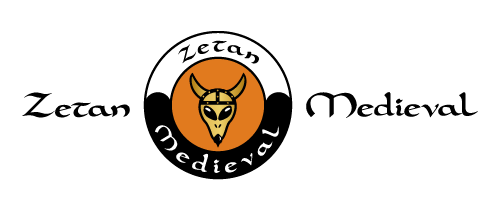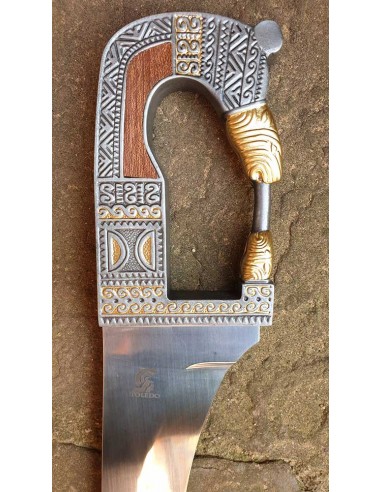The Iberian falcata is a type of sword characteristic of the Iberian Peninsula, especially used in the region that today includes Spain and Portugal during the Iron Age and Antiquity. The falcata is known for its distinctive design, making it one of the most recognizable swords in ancient history. Here are some characteristics of the Iberian falcata:
Curved blade shape: The falcata has a curved blade that widens towards the tip. This pronounced curve allows the blade to be effective for both cutting and stabbing, making it versatile in combat.
Single edge: Unlike many swords that are double edged (sharpened on both sides of the blade), the Iberian falcata has a single edge. This gives more weight to the front end of the blade, which improves its cutting ability.
Handle: The handle of the falcata is usually ergonomic and designed to fit comfortably in the user's hand. It may have a guard to protect the hand and a wooden or bone handle.
Origin: The Iberian falcata is a characteristic design of the Iberian Peninsula and has been mainly associated with the Iberian peoples who inhabited the region in ancient times. It was also used in other areas of the Iberian Peninsula, such as the Celtiberian region.
Use in combat: The falcata was an effective sword in hand-to-hand combat. Its design gave it a proper balance between cutting and thrusting, making it suitable for facing enemies both with and without armor.
Historical Legacy: The Iberian falcata is a notable example of the ability of ancient cultures to design effective weapons with the resources and technology available at the time. His legacy endures in the history of the Iberian Peninsula and in the archeology of the region.
The Iberian falcata is a distinctive sword with a curved, single-edged blade, used by the Iberian peoples and other cultures of the Iberian Peninsula in ancient times. Its design makes it versatile in combat and is a fascinating example of the weapons technology of the time.









